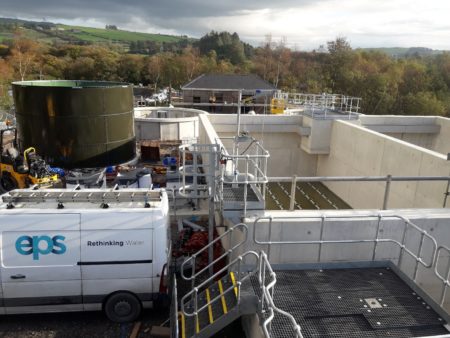2 December 2020
By Bryan Smyth
bryan@TheCork.ie
Irish Water is this week marking the halfway point of four significant projects across County Cork, which will see an investment of €27 million in new wastewater infrastructure for the Ballyvourney/Ballymakeera, Coachford, Innishannon and Dripsey areas.
Existing wastewater infrastructure in these areas was overloaded and outdated. These projects are delivering new wastewater treatment plants, as well as new network infrastructure, in each of the four villages.
Irish Water and Cork County Council are working in partnership to deliver this project. On completion, the new infrastructure will end the discharge of poorly treated effluent and improve water quality in the receiving waters in each area. Once operational, the new plants will ensure compliance with wastewater discharge regulations, boosting each of the four areas by enhancing the local environment, protecting health and supporting economic development. EPS Group Ltd. is working on behalf of Irish Water to deliver this project.
Reflecting on reaching the halfway point of the four projects, Seamus Glynn, Regional Infrastructure Lead with Irish Water said, “All new infrastructure on these projects has been sized to accommodate future population growth. These projects will enhance the local environment and provide a platform for social and economic development of each area well into the future.”
“We look forward to continuing to work with the local communities to deliver these projects in conjunction with our partners Cork County Council and EPS Group Ltd. Up until now, wastewater treatment has been mainly by septic tank in these villages and this technology is outdated and not meeting the required standards. The new wastewater treatment plants will bring big benefits, including enhancing the amenity value of each area.”
“Irish Water is confident that these projects will bring significant benefits to the Ballyvourney/Ballymakeera, Coachford, Dripsey and Innishannon areas for many years to come.”
These projects are being delivered as part of Irish Water’s investment plan. Irish Water’s investment plan prioritises key outcomes such as leakage, water supply zones removed from the EPA’s Remedial Action List, areas where there is raw sewage entering the rivers, lakes and the sea (untreated agglomerations), and areas identified by the European Court of Justice under the Urban Waste Water Treatment Directive.
Irish Water and our appointed Contractor, EPS Group Ltd., will remain in contact with the local communities throughout the remainder of the works.
Proposed programme of works in each area:
Coachford
Site investigation works commenced in late 2019. Construction of the new wastewater treatment plant and sewer network is ongoing, while the outfall pipe is substantially complete. Irish Water anticipates these works will be complete by Q4 2021. On completion, the new plant will serve a population of approximately 1,600 people.Ballyvourney/Ballymakeera
Works, including earthworks and construction of the new wastewater treatment plant, commenced at the end of 2019. Construction of the new wastewater treatment plant and pumping station are largely complete with mechanical works ongoing. Irish Water anticipates that these works will be complete in Q2 of 2021. On completion, the new plant and infrastructure will serve a population of approximately 2,600 people.Innishannon
Site investigation works were completed in late 2019. Construction of the sewer infrastructure and river crossing is complete. Construction of the new plant is progressing. Irish Water anticipates that these works will be complete by Q1 of 2022. On completion, the new plant and infrastructure will serve a population of approximately 1,600 people.Dripsey
Earthworks associated with the new plant commenced early in 2020. Construction of the new sewer pipeline is substantially complete, while upgrades to the plant are ongoing. Irish Water anticipates that these works will be complete by Q3 of 2021. On completion, the new plant and infrastructure will serve a population of approximately 600 people.


